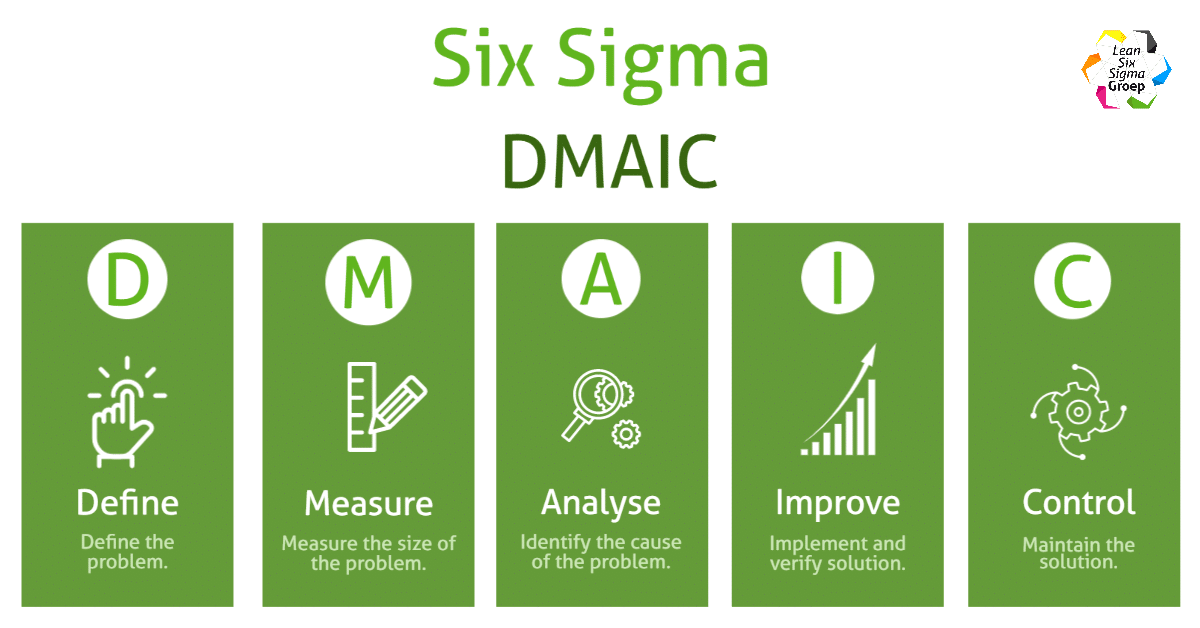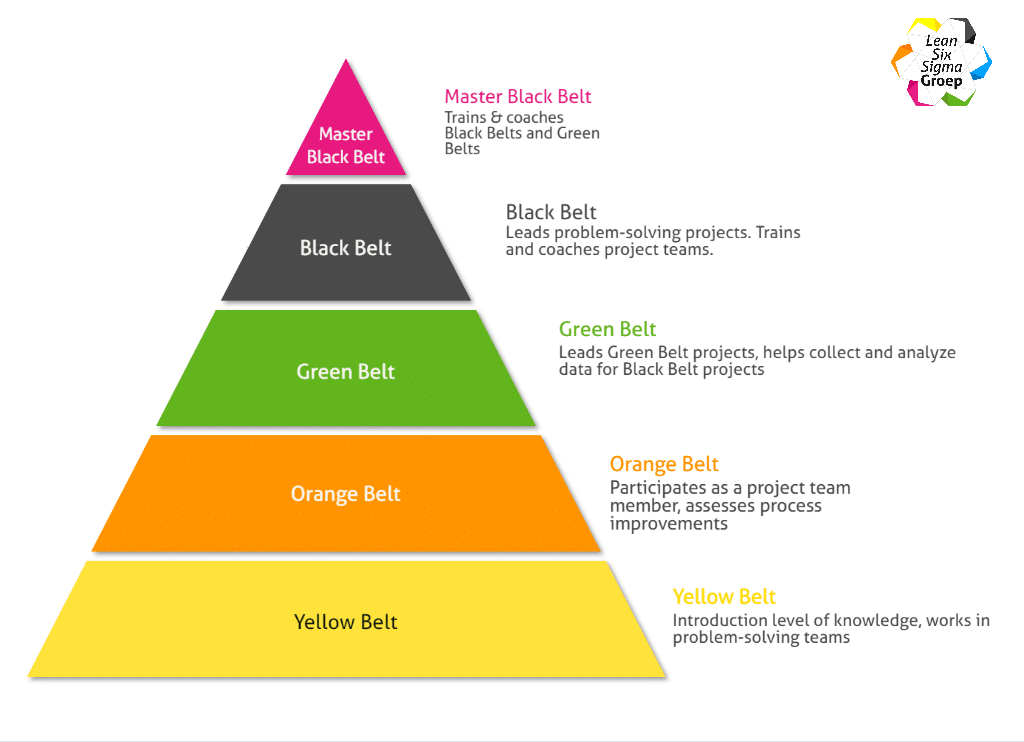
Increase efficiency and effectiveness
Six Sigma is a method to increase the efficiency and effectiveness of a process, ie doing the right things and doing things right. The purpose of the method is to reduce variation in processes to meet customer specifications for the product or service.
The method consists of five phases, also known as the DMAIC method:
D = Definition phase, this first phase describes the problem we are working on and the value for the company. The customer’s wishes are visualized.
M = Measurement phase, in this phase we measure against the process, we collect basic information about the process / product and we determine the improvement goals.
A = Analysis phase, in this phase you determine the main causes, those are the process factors that have the most influence on the process output.
I = Improvement phase, we determine the best options for improving process performance and we test these solutions.
C = Control phase, the best solution is implemented and the project and new working methods are secured and transferred.
Sigma stands for standard deviation in statistics, which is the average deviation from the average. Sigma (σ) is the Greek letter that represents the distribution of a distribution. It says something about the distribution of the outcome of your process.
The term comes from the manufacturing industry. A production process can be described with a sigma assessment, which indicates how well a process is performing. The higher the sigma value, the better your process performs. A six sigma process means that there are 3.4 defects on 1 million products. It is a set of techniques and tools for process improvement.
It was introduced by the American engineer Bill Smith while working at Motorola in 1980. Jack Welch made it central to his business strategy at General Electric in 1995. They set Six Sigma as a target for their production processes and developed the DMAIC method described above. . The method has been very successfully applied and spread by General Electric. Six Sigma is not only applicable in industry, but also in business services, logistics, (semi) government and healthcare; actually in every industry.
An important innovation concerns the absolute “professionalization” of quality management functions. Prior to Six Sigma, in practice, quality management had been largely relegated to the production floor and to statisticians in a separate quality department. Formal Six Sigma programs use some sort of top position terminology (similar to some martial arts systems, such as judo) to define a hierarchy (and special career path) that encompasses all business functions and levels. The method identifies several key roles for successful implementation.
Some organizations use additional belt colors, such as Orange Belts, for employees who have basic training in Six Sigma tools and generally participate in projects and “White belts” for those trained locally in the concepts but not participating in the project team.
Lean focuses on eliminating waste and creating flow in a process. Six Sigma focuses on reducing dispersion within a process.
| Lean | Six Sigma |
| Focus on process speed | Emphasis on eliminating defects |
| Reduction of waiting time | Reducing variation |
| Focus on value adding activities | Using statistics, focus on quality |
| Tools to handle complexity | Tools for troubleshooting |
| Reduce the cost of complexity | Data-driven decisions |
| Building an infrastructure for a smooth process flow (flow) | Builds an infrastructure to get and keep results |
| Mainly works on efficiency | Mainly works on effectiveness |
| Problems usually measured in time (sec.) | Problems usually measured in “pieces” |
Lean and Six Sigma are usually mentioned in the same breath. Both methods strive to meet the customer’s wishes as best as possible. Lean focuses more on process, Six Sigma focuses on the product. Tools from Lean can be used very well with the Six Sigma method, so that the methods fit together well. Lean Six Sigma is a complementary method.
Invalid form shortcode: [activecampaign form=88 css=1]



441+ beoordelingen